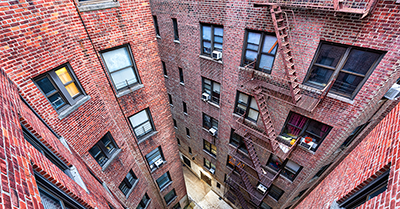
One Stop Shopping – When You Go to the Doctor?
There is an always-evolving effort to find ways to retrofit the suburbs, and many of the ideas that have been born in recent years do surround shopping malls.
Whether they get a facelift, are completely razed and replaced by a walkable community of shops, restaurants and residences, or are filling their hallways with pop-up shops or in-person locations for online retailers, the goal remains the same – improve business and the local economy.
One other option, that would never have been thought of by the last generation, is “Medtail.”
Yes, it sounds silly, but the concept might actually be brilliant.
Malls are partnering with health clinics to fill empty spaces as a way to attract potential shoppers.
It’s an interesting concept. One wouldn’t think that if you are going to the doctor because you aren’t feeling well that you’d be inclined to go shopping once you leave, but then again, the convenience of having those stores just steps from the clinic could be appealing enough for you to power through that headache, or runny nose or pestering cough to make a quick pit stop at Aeropostale.
In November, Mall of America in Minneapolis is opening a 2,300-square-foot walk-in clinic. Partnering with the physicians at the University of Minnesota and a local health-care system, the clinic will operate with myriad exam rooms, have lab space, a pharmacy and even a radiology department.
According to data collected by CNN, in the past two years, leases in malls for clothing retailers has declined by 10 percent, but those medical clinics being placed in malls has increased by 60 percent.
Health clinics have been booming across America in the past decade as an affordable alternative to emergency room visits when people can’t get an appointment with their primary care physician.
These clinics are often buzzing with activity for about 12 hours a day.
Many of them are in stand-alone locations on main thoroughfares, and while that still provides a potential incentive to go to other retailers while you are out and about, it still requires you to get in your car and drive to another location. Even if these stores are close by, the actual concept of transporting yourself there can be a deterrent.
But, if you walk out of the clinic and you are in a mall with multiple shops to choose from, the probability of shopping for something vastly increases.
On a smaller scale, with clinics in malls, the clinics must be staffed, and the likelihood of these doctors, nurses and other clinic employees shopping as well is an attractive concept for mall owners.
“Medtail” is a win/win scenario for the mall owners and the clinics themselves. For the mall owner, unlike a store that’s going to rely on its profits to determine long-term viability in a mall, health clinics are more reliable when it comes to financial solvency. As such, they should be good tenants, able to afford higher leases, and will likely lease the space for a much longer period of time.
On the other side, malls offer the health clinic and the health providers backing them an incredibly convenient location for outpatient and preventative care, and might even get additional patients who came to the mall to shop first and foremost, and then decided to hit the clinic, as opposed to the other way around.
Adding medical clinics also makes sense for mall owners because they draw in doctors, nurses and technicians every day who may shop and eat at restaurants, according to a May research report by real estate firm JLL. Health care providers are also attractive tenants for mall landlords because they tend to have high credit ratings and sign longer leases compared with other retailers, JLL analysts noted.
On the provider and health insurer side, shopping malls give companies convenient locations to set up outpatient care posts and preventative care locations for patients. Providers are increasingly looking to these lower-cost clinics to help patients avoid expensive trips to the emergency room.
And this is likely just the dipping of toes in the water when it comes to the marriage of retail and medical services.
Consider the Dana-Farber Cancer Institute, one of the leaders in cancer research and treatment in the United States. It is currently in the process of building a 34,000-square-foot hematology and oncology outpatient facility in the Patriot Place shopping center in Foxborough, Mass., just outside of Boston.
If that proves to be a success, other outpatient outposts could start to crop up at malls or shopping centers across America as many folks who need blood disorder or cancer treatments often have to travel great distances.
Cutting down on such lengthy commutes will be a boon for the patients and potentially bring economic benefit to local economies at the same time.
It’s no longer considered thinking outside the box to imagine malls that have primary care physician offices, or specialty care for certain physical conditions or the management of chronic illnesses.
It could even get to a point where “anchor” department stores are replaced with medical facilities like rehab centers, MRI outposts or even “mini-hospitals.”
Convenience is a very real motivator in the current age. Finding ways to make malls a one-stop-shop for all that convenience is the rapidly growing trend.
Time to Focus on Affordable Housing
Taxes on real estate are not the answer. Sign the petition calling on Congress to address our country’s housing shortage.





